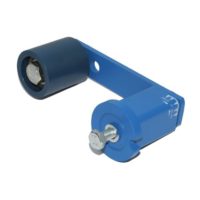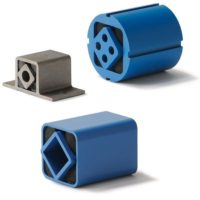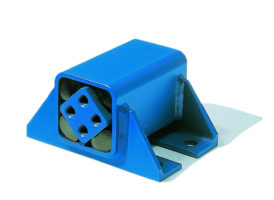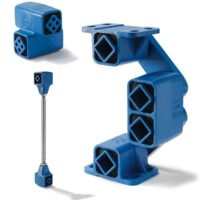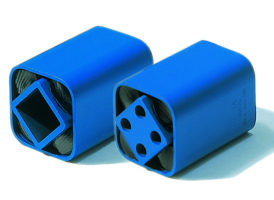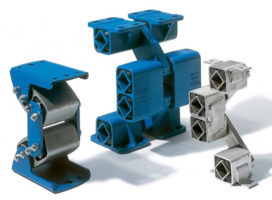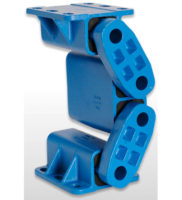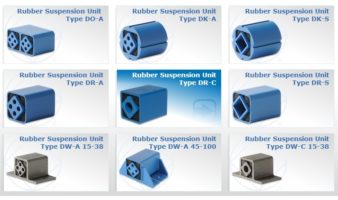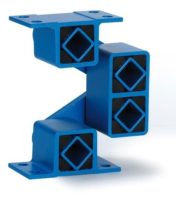
3.6
Anti-vibration Mounts
Acoustic isolation,
Steel
1 : 1
related to steel:
Bronze
1 : 1.3
Cork
1 :
400
Rubber
1 :
800
Air
1 : 90 000
6.0
5.5
5.0
4.5
4.0
3.5
3.0
2.5
2.0
600
700
800
900
1000
1100
1200
1300
1400
1500
1600
1700
1800
1900
2000
2100
2200
2300
2400
2500
2600
2700
2800
2900
3000
Diagram of the
vibration isolation W [%]
n
s
=
Revolution exciter
(machine)
fe =
Natural frequency
damper
Vibration isolation
fe
n
s
90 %
92 %
94 %
95 %
96 %
97 %
98 %
99 %
W
=
100 –
100
2
– 1
n
s
60
· f e
(
)
Isolation
<
85 %
4
Resonance field (
l
=
1
)
At equal values of the excitation frequency and the mount
natural frequency an uncontrollable swing-up of machine
and damper occurs. In the long run, this appearance will be
destructive for machine and mount (fig.
2
).
Subcritical installations (
l
<
1
)
On subcritical installations (fig.
2
) an anti-vibration mount
with high mechanical stiffness and only small deflection be-
haviours should be chosen, e. g. ROSTA V mounts (high
machine stability on mounts). In spite of the fact that the de-
gree of isolation is not definable, this suspension efficiently
absorbs
shocks
and
impacts
generated by relatively slow
turning machines like e. g. mixers, crushers (cone-crushers),
punching presses, sheet iron shears, etc. On
subcritical
installations the degree of isolation is not definable. Isolation
results have to be measured out (before and after mount in-
stallation).
2. Solid-borne Noise Isolation
Whereas the isolation of mechanically generated oscilla-
tions and shocks are determined and dissipated by means of
the aforementioned vibration dampening theory, the
sol-
id-borne noise isolation
is subject to the technology of
wave mechanics. The dampening effect is related to the pro-
portion of the relevant acoustic resistance (acoustic resis-
tance or wave resistance = acoustic velocity x material den-
sity). The adjacent chart (fig.
5
) shows some comparative
values of the resulting isolation proportions. Generally, using
a rubber-steel composite mount, an ideal isolation result of
the solid-borne noise can be expected – through the entire
frequency range.
5
[ % ]
[ rpm ]
[ Hz ]



